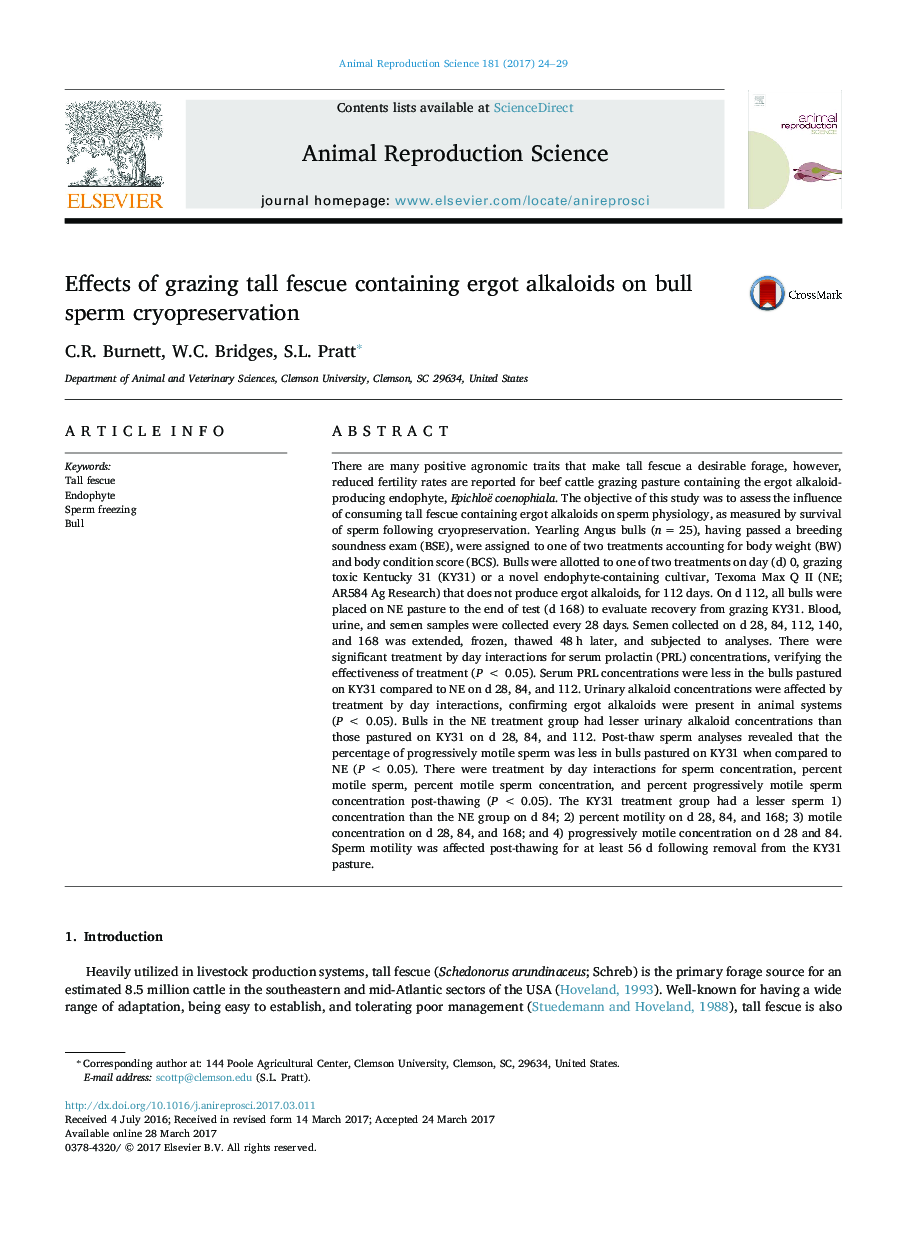| کد مقاله | کد نشریه | سال انتشار | مقاله انگلیسی | نسخه تمام متن |
|---|---|---|---|---|
| 5520275 | 1544696 | 2017 | 6 صفحه PDF | دانلود رایگان |
There are many positive agronomic traits that make tall fescue a desirable forage, however, reduced fertility rates are reported for beef cattle grazing pasture containing the ergot alkaloid-producing endophyte, Epichloë coenophiala. The objective of this study was to assess the influence of consuming tall fescue containing ergot alkaloids on sperm physiology, as measured by survival of sperm following cryopreservation. Yearling Angus bulls (n = 25), having passed a breeding soundness exam (BSE), were assigned to one of two treatments accounting for body weight (BW) and body condition score (BCS). Bulls were allotted to one of two treatments on day (d) 0, grazing toxic Kentucky 31 (KY31) or a novel endophyte-containing cultivar, Texoma Max Q II (NE; AR584 Ag Research) that does not produce ergot alkaloids, for 112 days. On d 112, all bulls were placed on NE pasture to the end of test (d 168) to evaluate recovery from grazing KY31. Blood, urine, and semen samples were collected every 28 days. Semen collected on d 28, 84, 112, 140, and 168 was extended, frozen, thawed 48 h later, and subjected to analyses. There were significant treatment by day interactions for serum prolactin (PRL) concentrations, verifying the effectiveness of treatment (P < 0.05). Serum PRL concentrations were less in the bulls pastured on KY31 compared to NE on d 28, 84, and 112. Urinary alkaloid concentrations were affected by treatment by day interactions, confirming ergot alkaloids were present in animal systems (P < 0.05). Bulls in the NE treatment group had lesser urinary alkaloid concentrations than those pastured on KY31 on d 28, 84, and 112. Post-thaw sperm analyses revealed that the percentage of progressively motile sperm was less in bulls pastured on KY31 when compared to NE (P < 0.05). There were treatment by day interactions for sperm concentration, percent motile sperm, percent motile sperm concentration, and percent progressively motile sperm concentration post-thawing (P < 0.05). The KY31 treatment group had a lesser sperm 1) concentration than the NE group on d 84; 2) percent motility on d 28, 84, and 168; 3) motile concentration on d 28, 84, and 168; and 4) progressively motile concentration on d 28 and 84. Sperm motility was affected post-thawing for at least 56 d following removal from the KY31 pasture.
Journal: Animal Reproduction Science - Volume 181, June 2017, Pages 24–29
